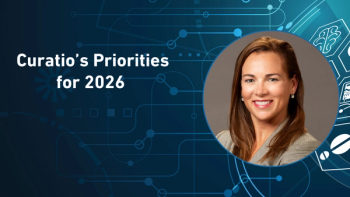
In the Shadows of the Drug Affordability Debate, Patients Pay the Ultimate Price
All healthcare stakeholders must participate to dismantle barriers and ensure access to medicines that save lives.
In the first year of our "Prescription for Better Access” podcast, our guests have represented on-the-ground stakeholders who have shed light on the stark paradox that underpins the drug access dialogue: in an era of unprecedented scientific breakthroughs, affordability and access are concurrently deteriorating. In episode 4, health economist Dr. Jamie Robinson described the challenge as the "war of all against all."
We have written this column as a call to action for the industry by highlighting critical aspects of this paradox and sharing emerging ideas from our guests that could improve drug access without placing undue financial and administrative burdens on patients.
Reexamining the Role of Drug Pricing
An August 2023 study by the Kaiser Family Foundation found 82% of respondents believe drug prices are “unreasonable.” Robinson noted that the criticism of high drug prices is understandable; however, he shared that the United States has become the primary funder of innovation for the world. He explained that generic drugs are priced to cover manufacturing and distribution, whereas innovative medicines also include R&D investment for future drugs.
Robinson further explained the US healthcare system allows a unique drug payment structure, in which payers lack the incentive to lower drug prices in large part due to the rebate-driven "gross to net bubble,” which is the gap between a medication's sticker price and its actual cost post-rebates and discounts. With patient cost-shares often based on list prices (as opposed to net prices), this bubble illustrates a pricing and access model riddled with opacity and insensitivity toward the financial strain on patients.
Some guests this year recognized the need to shift from the current drug pricing approach to a value-based methodology. In episode 5, we interviewed Dr. Steven Pearson, the founder of the Institute for Clinical and Economic Review (ICER). Pearson discussed the non-profit's role as an arbiter of value assessment in the US and the challenges of evaluating the value of new therapies and the economic determination of a fair price. He acknowledged ICER’s efforts to continually refine its methodologies while becoming more inclusive and transparent.
Reimagining Insurance Benefit Design
Guests on several episodes pointed to existing drug benefit designs and utilization management requirements as the root causes of patient access and affordability challenges. In episode 9, Julie Baak, practice manager for the Arthritis Center of St. Louis, described how she had witnessed the financial incentives of insurance companies and pharmacy benefit managers (PBMs) overriding physicians' clinical decisions.
She shared how formulary management was used to drive insurance-mandated drug switching to a product that generated higher rebates for the payer while sometimes causing adverse clinical outcomes and even patient hospitalizations. She also described how prior authorizations, created to ensure effective utilization, have become so pervasive and onerous that their primary purpose is to slow down or stop physicians from prescribing needed medicines.
On episode 2, Reid Jewett Smith, PhD, an educator and patient advocate, who was born with cystic fibrosis (CF) and credits the new CF-modulator drugs for reversing the worst effects of her disease, described the diligence required when facing an insurance change. She shared how the deductibles and copays have rapidly increased and become a significant financial barrier.
Sadly, many patients have avoided treatment to not burden their families with medical debt or personal bankruptcy. These examples demonstrate how the current benefit design limits and sometimes overrides physician decisions while also loading the patients with more financial responsibilities.
Empowering Employer-Based Coverage to Reform PBMs
One strategy for improving benefit design is to target the government and employers, who are the parties ultimately responsible for funding the plans. In episode 10, we interviewed author Matt Ohrt, one of the grassroots leaders helping small and medium-sized employers take action to reduce healthcare spending. Ohrt champions the direct primary care model, which has emerged as a beacon of reform, offering cost transparency and potential savings for patients—a radical shift from the profit-centric elements prevalent in the industry.
In episode 6, we interviewed PBM veteran Mesfin Teganu, who shared that the status quo has worked very well for PBMs. He believes PBMs (and associated benefit consultants) must reinvent themselves to adapt to employers' increasing empowerment and importance.
He thinks the legacy PBMs will resist change as they have built a competitive advantage and benefit from the current rebate-driven model. However, he believes the tide may be turning. New low-cost options like Mark Cuban’s Cost Plus Drugs and legislative initiatives from Washington, DC, could dismantle the opaque practices of PBMs and potentially accelerate better-designed models.
Fortifying Manufacturer-Sponsored Support Programs
Beyond their role in innovation, biopharma manufacturers are pivotal in helping patients access and afford medicines. In episode 3, we spoke with Peyton Howell, Parexel's COO and a patient services industry pioneer, who introduced the concept of manufacturer-sponsored Hub services.
Howell described how these hubs, whether in-house or external, navigate the complexities of reimbursement, prior authorization, financial assistance, and other support services, aiding patients in accessing and affording care. She emphasized the industry's need for transparency, simplification, and advocacy for voiceless patients.
Howell also highlighted the necessity for manufacturers and their Hub partners to continually innovate in patient support program design and delivery, staying ahead of payers' tactics to minimize their financial responsibility for medications.
One payer tactic, alternative funding programs (AFPs), was explored in episode 12. Amy Niles, chief engagement and advocacy officer for the PAN Foundation, described how insurance companies exclude vital specialty drugs from their formulary and hire third-party vendors to submit applications to manufacturer-sponsored patient assistance programs (PAPs).
With the threat of losing the commercially insured market, some manufacturers are starting to take drastic steps to change eligibility criteria and even exclude all patients with commercial insurance from receiving PAP drugs. After more than 30 years of providing drugs for uninsured and underinsured patients, PAPs could be closed by manufacturers if AFPs continue to expand.
Harnessing the Power of the Patients
One of the key messages from all the podcasts was that patients are the most burdened in the current drug payment system. In episode 2, we also interviewed Donna Cryer, JD, founder of the Global Liver Institute, who received a liver transplant over 20 years ago, just as the physicians advised she had only a week to live.
Cryer described the irony that those who need the most sophisticated medications or the most intensive care have an undue burden to learn the system, often in a time of incredible need. She wants to educate and empower patients as healthcare consumers, which is essential to assist them in accessing care.
Another example of harnessing the power of patients was the efforts of Carl Schmid, executive director of the HIV and Hepatitis Policy Institute. We interviewed Schmid in episode 7 to learn more about copay accumulators and maximizers and his fight at the state and local levels to eliminate the programs.
Schmid described how legislators in 15 states passed laws to prohibit accumulators after the shifting of cost burden back onto patients raised questions about the true benefactors of such programs and the extent to which they serve the interests of patients versus those of insurers.After the Department of Health and Human Services codified a 2021 rule permitting accumulators, Schmid led the lawsuit to overturn their rule. This past October, Schmid and two other non-profit plaintiffs won their lawsuit, which the Biden administration appealed in late November.
Schmid and the other plaintiffs demonstrated that patients are not mere bystanders; they are and should be recognized as pivotal players capable of influencing policy reforms and advocating for systemic change.
Crafting a Compassionate Path Forward
Each episode of the podcast closed with the same question posed to our guests: “What is their Prescription for Better Access?”
The call to action from our podcast guests yielded a robust and coherent vision for better access to healthcare. The current healthcare system, entangled in inefficiencies and often unsustainable practices, cries out for reform that includes legislative and regulatory intervention to facilitate significant policy changes.
Experts urge a shake-up that incentivizes manufacturers to adopt value-based pricing and insist on applying rebates at the point of sale to benefit patients directly. The disentangling of health insurance from employment emerges as a critical step toward individual empowerment and healthcare integration with other essential elements of well-being like food, housing, and childcare.
A patient-centered approach requires simplifying the system to alleviate the undue burden on those navigating it during their most vulnerable moments. Education and advocacy form the backbone of this envisioned transformation. Creating robust advocacy networks and empowering patients to be savvy consumers are lofty ideals and necessary steps for driving change.
As we look to 2024, these ideas present an inspiring and actionable roadmap. They challenge us to embrace our roles—whether as patients, employers, or industry insiders—to demand and drive change. The message is clear: everyone must participate to dismantle barriers and ensure access to medicines that save lives.
With this collective effort, we can address the pressing issues of our times by making breakthrough therapies widely available. It's a call not only to dream of a more equitable system but to actively construct it with advocacy, legislation, and a relentless pursuit of innovation. We hope all of you will join our efforts.
About the Authors
Mark Hansan is co-founder and executive chairman of CareMetx, LLC.
Dr. Scott Howell is the former chief strategy officer and head of market access for Novartis.
Newsletter
Stay ahead in the life sciences industry with Pharmaceutical Commerce, the latest news, trends, and strategies in drug distribution, commercialization, and market access.





